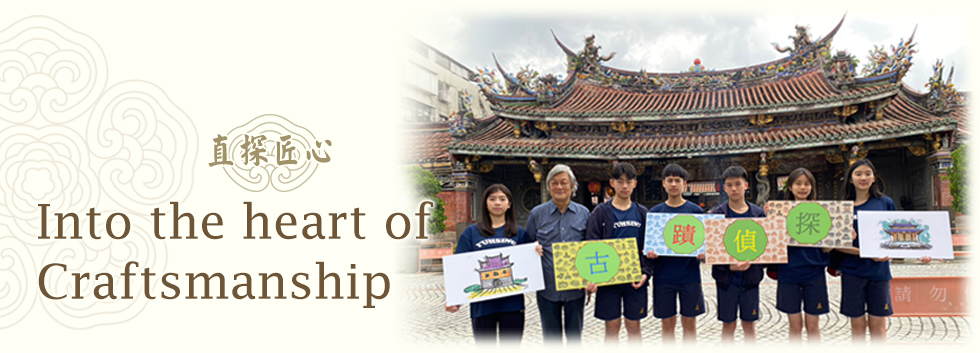Organized by Edward Lu
Academies
The ancient academy of classical learning (“shuyuan” in Chinese) complemented the government schools. It was the mainstay of education in Taiwan during the Qing dynasty, between public and private schools. Chinese education emphasizes both teaching by example and teaching by words, and teachers call the academy home. Students can consult with teachers anytime. Most of the academy buildings are in courtyard houses. In the middle of the building is the lecture hall, which is also for worship to Zhu Zi (also known as Zhu Xi, a Chinese calligrapher, historian, philosopher, poet, and politician during the Song dynasty) or Wen Chang Emperor, and in the back is the teacher’s residence, while the two side schoolhouses can be used to accommodate students from far away. Teachers and students live together to realize the function of life education. The overall space is centered on the lecture hall, and the rituals are integrated into it, so the spatial function of the traditional school can be roughly divided into three parts: teaching, worship, and housing.
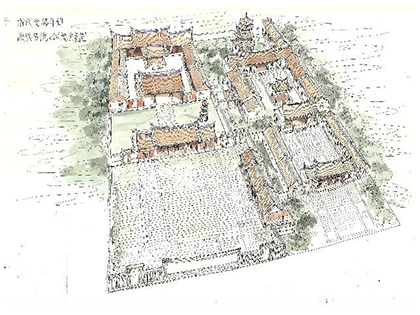
A Panoramic Aerial View of Fengyi Academy
(Academy and Examination Academy are built side by side)
Source: Professor Li Chien-Lang

Front Hall and Half Moon Pond of Daodong Tutorial Academy,
Hemei, Changhua
Source: Professor Li Chien-Lang
The layout of the academy adopts the traditional axisymmetric form. The teaching space is mainly in the lecture hall, which has the highest building height, and the high and wide sense of space creates a tranquil atmosphere for students to devote themselves to learning. For single- or two-entry schools, a shrine for worship to Zhu Zi or Wen Chang Emperor is located in the lecture hall; for three-entry schools, it is located in the back hall or a separate room. In addition, a worship hall can be set up in the bright room of the dragon guard section. The living space for teachers and their families is located in the ear rooms (rooms on either side of the main body) on either side of the lecture hall or back hall, separated mainly by walls and doors to maintain privacy. There are also academies built alongside the Examination Institute, such as Fongyi Academy in Fengshan, Kaohsiung.
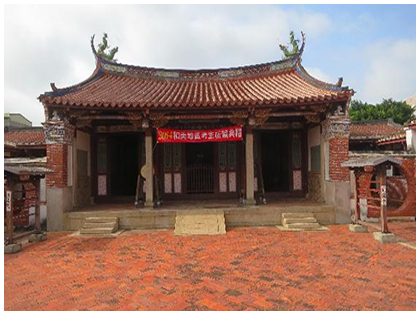
Main Hall of Daodong Tutorial Academy, Hemei, Changhua
Source: Professor Li Chien-Lang
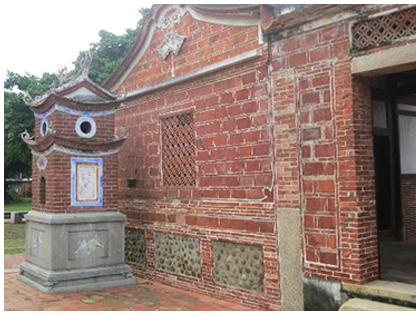
Word-Cherishing Kiosk of Daodong Tutorial Academy, Hemei, Changhua
Source: Professor Li Chien-Lang
Some academies also have unique buildings, such as the Kui Xing Pavilion, which is dedicated to Kui Xing, the god of literary luck, who is said to be the master of the imperial examinations and is in the form of a pavilion. It is a Taoist-style building with a four-cornered and octagonal roof (in line with “the four signs and eight trigrams” in the Book of Changes, also known as Yi Jing), which is a beautiful shape and can be installed in Confucian temples, academies, and other literary buildings. Traditional society has great respect for the written word, and the written paper cannot be discarded anywhere but must be incinerated in the “word-cherishing kiosk.” These kinds of cultural and educational architectural facilities are commonly found in the academies, which is a manifestation of the ancient people’s admiration for literature and respect for characters. The decoration of the academies is particularly cultural and educational, and it differs from the couplets on the plaques in ancestral temples and houses.
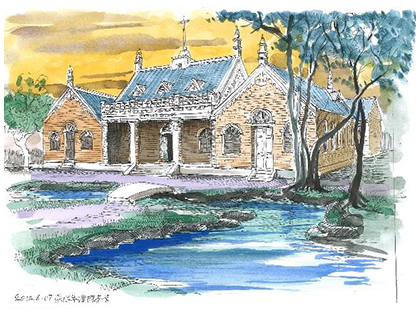
Oxford College, a Distant Perspective View_ 20180919.
Source: Professor Li Chien-Lang

Oxford College
Source: Professor Li Chien-Lang
One of the colleges that Professor Li Chien-Lang participated in researching is the Oxford College in Tamshui District, New Taipei City, which was completed in 1882 and built by Rev. George Leslie Mackay. It is the first modern school of higher education in Taiwan. Its floor plan resembles a traditional courtyard, with a pagoda-like decoration protruding from the roof ridge, revealing the fusion of Oriental and Western characteristics. The other is the Fongyi Academy in the Fengshan area, which was built in 1814. In as early as 1984, Professor Li started to conduct research on the historical sites of the Fongyi Academy, witnessing the transformation of the Fengyi Academy before and after the restoration. In 1985, the Ministry of the Interior designated its existing main buildings, such as the Shoubi, Toumen, Lecture Hall, School House, and part of the Examination Yuan as historic sites, making it the most comprehensive, most complete, and earliest of the existing academies in Taiwan.
Compared to overseas universities, many of which have a long history, occupy a vast area, are well-funded, and have beautiful campus buildings, the appreciation of Taiwan’s ancient academies brings us to understand the appearance of folk education in Taiwan’s early reclamation society, to witness the rise and difficulty of traditional education in Taiwan, and to cherish the advanced learning environment and facilities that our students have nowadays.- Li Chien-Lang (1999). Research and maintenance plan of Oxford College. Cultural Affairs Bureau of Taipei County Government.
- Fongyi Academy. 2022/10/29 from https://fongyiacademy.khcc.gov.tw/home02.aspx?ID=$1001&IDK=2&EXEC=D&DATA=1886&AP=$1001_HISTORY-0
- Li Chien-Lang (2014). The Architectural Beauty of Fongyi Academy, a Historic Site in Kaohsiung City.
Cultural Affairs Bureau of Kaohsiung City Government.
- Li Chien-Lang (2014) The Architectural Beauty of Fongyi Academy. Yushanshe Publishing Co., Ltd.
- https://www.mjib.gov.tw/FileUploads/eBooks/53e747af8fda4721ad039ddd6b132026/Section_file/
fbbfe2f443654ee2ad7297d00112e12c.pdf
Lu Jun (2018). The Elegance of an Ancient City in Taiwan: Fongyi Academy. Qingliu Bimonthly. - Li Chien-Lang. Illustrated Encyclopedia of Ancient Architecture in Taiwan. Yuanliu Publishing Co.
- Li Chien-Lang, Yu Yiping. Getting Started with Historic Site. Yuanliu Publishing Co.
- Li Chien-Lang. Into the Heart of Craftsmanship. Yuanliu Publishing Co.

